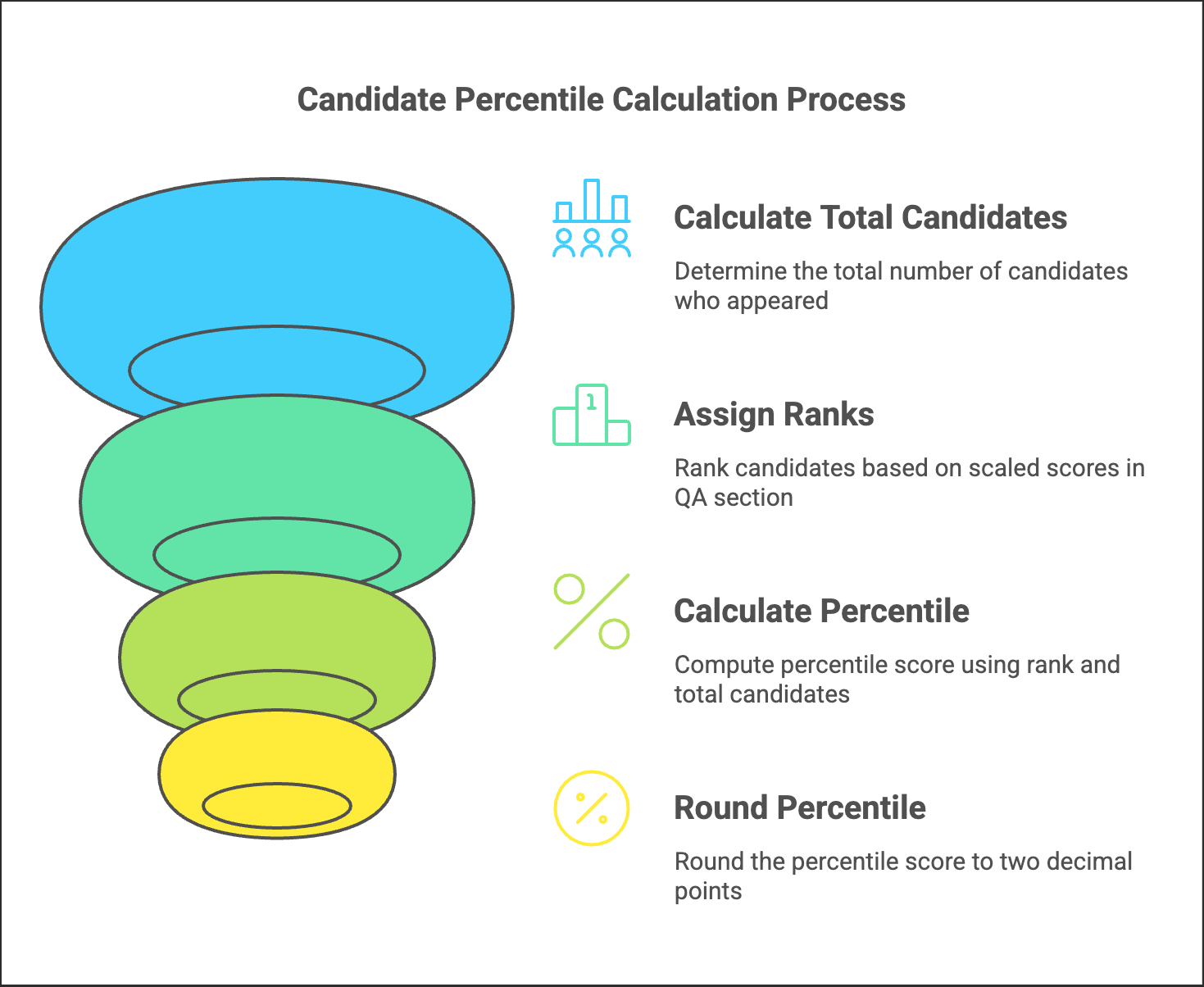Percentile Score Calculation (Official CAT website) | CAT Mock Test Series 2025 PDF Download
Calculation of the Percentile Score of a Candidate
The steps described below are followed to calculate the CAT overall and sectional percentile scores obtained by a candidate. While illustrating the percentile score calculation process, the QA section is chosen as an example. A similar process is followed for the overall percentile score calculation and for the other two sections, i.e. DILR and VARC in CAT.

Step 1:
Calculate the total number of candidates (N) who appeared for CAT (i.e. including morning, afternoon and evening sessions).
Step 2:
Assign a rank (r), based on the scaled scores obtained in the QA section, to all
candidates who appeared for CAT. In the case of two or more candidates obtaining identical scaled scores in the QA section, assign identical ranks to all those candidates.
As an illustration, suppose exactly two candidates obtain the highest scaled score in the QA section, and then both of those candidates are assigned a rank of 1. Moreover, the candidate(s) obtaining the second-highest scaled score in the QA section are assigned a rank of 3 and so on.
Step 3:
Calculate the percentile score (P) of a candidate with rank (r) in the QA section as:
𝑃 = ((𝑁−𝑟)/𝑁) × 100.
Step 4:
Round off the calculated percentile score (P) of a candidate up to two decimal points.
For example, all percentile scores greater than or equal to 99.995 are rounded off to 100, all percentile scores greater than or equal to 99.985 but strictly less than 99.995 are rounded off to 99.99 and so on.
A methodology similar to the one described above is used for the computation of the overall CAT percentile scores and for the percentile scores of other sections.
|
25 videos|32 docs|70 tests
|
FAQs on Percentile Score Calculation (Official CAT website) - CAT Mock Test Series 2025
| 1. How is the percentile score calculated for CAT candidates? |  |
| 2. What does a percentile score indicate in the context of the CAT exam? |  |
| 3. Are there different percentile scores for each section in the CAT exam? |  |
| 4. How can candidates improve their percentile score in the CAT exam? |  |
| 5. What is the significance of percentile scores for admission to MBA programs? |  |

















